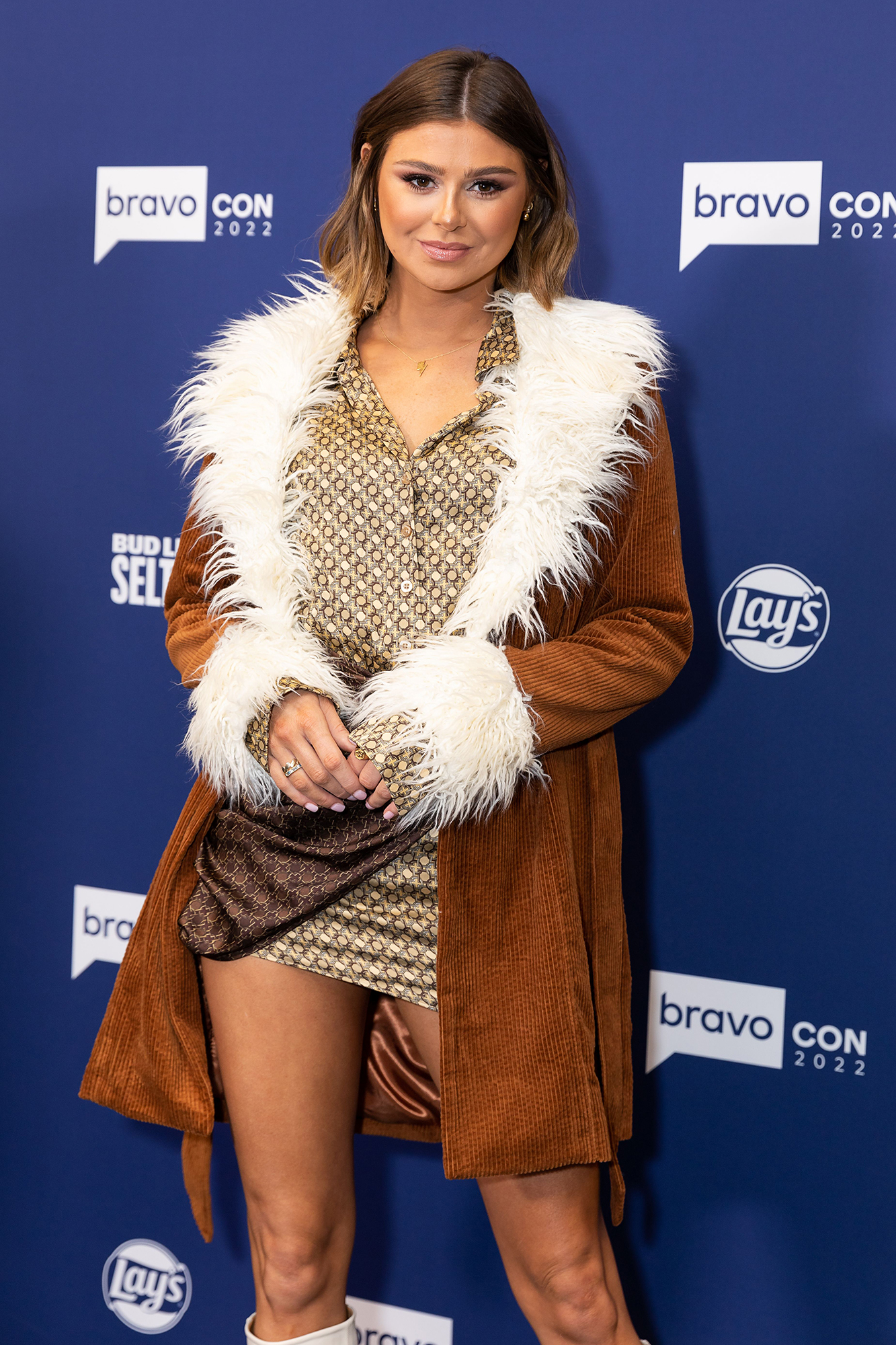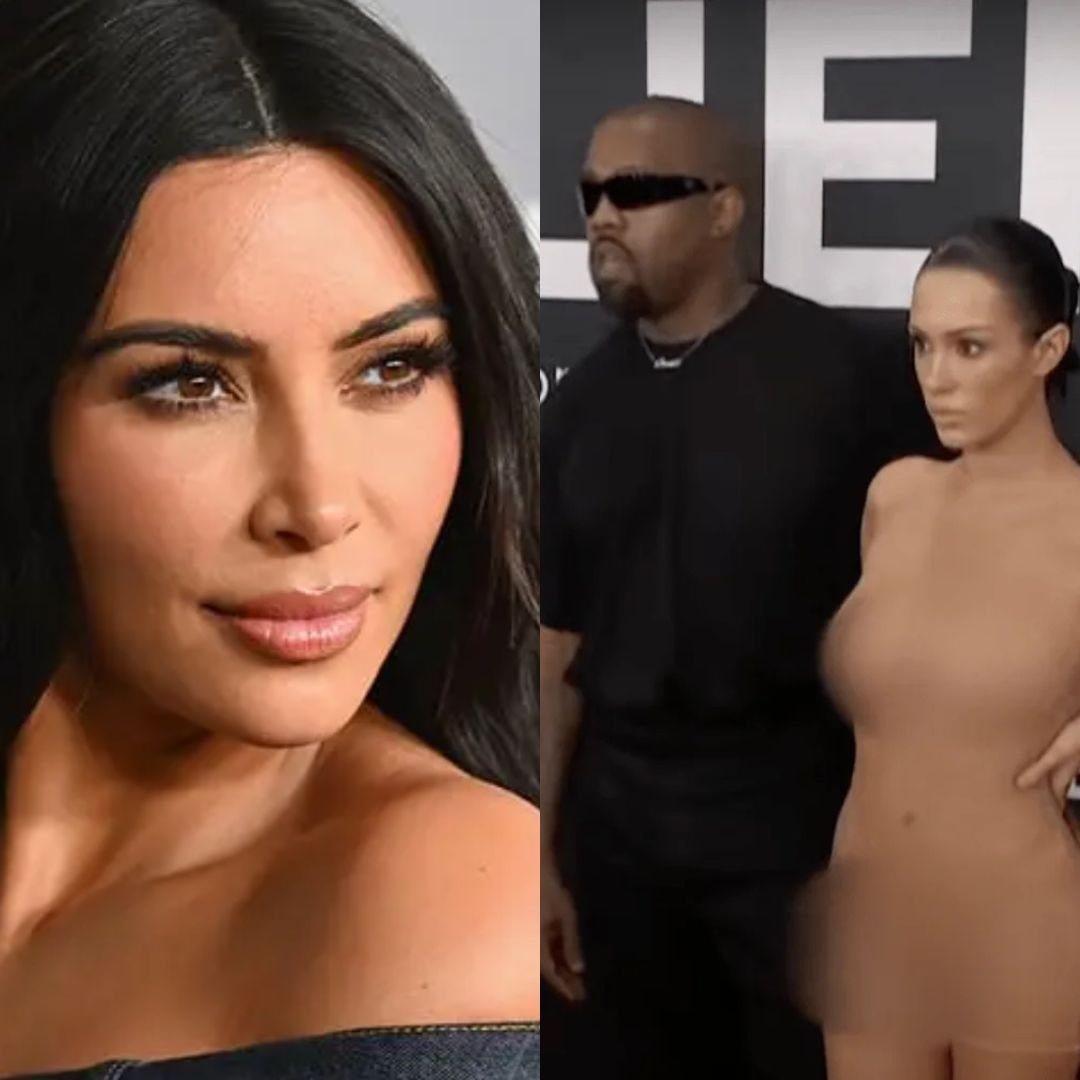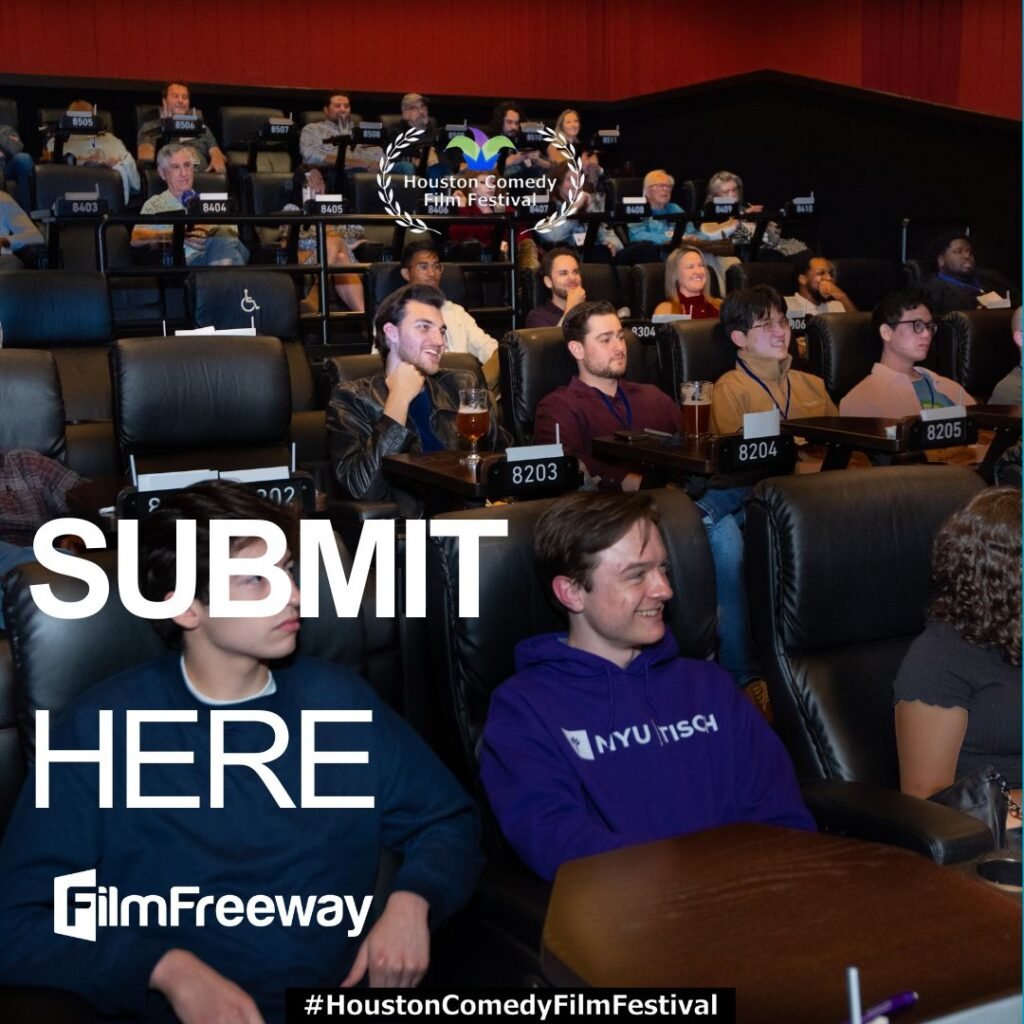Entertainment
Raquel Leviss: I Now ‘Understand’ Why I Was Choosing ‘Unavailable’ Men on August 16, 2023 at 12:40 pm Us Weekly

Raquel Leviss Stephanie Augello/Shutterstock
Raquel Leviss is speaking out for the first time since the Vanderpump Rules season 10 reunion, telling Bethenny Frankel that she has finally “come to the place” where her actions — having an affair with costar Tom Sandoval — make “sense” to her.
“Part of the reason why I wanted to take some time away is just because it was so chaotic and loud and there was such vitriol online. But then the other part of the reason why I wanted to go to a treatment facility was to understand my behaviors,” Leviss began on iHeartRadio’s “ReWives” podcast on Wednesday, August 16. “And my goal was to really get down to the bottom of, ‘OK, why am I choosing men that are unavailable? Why do I keep finding myself in unhealthy relationships? What are the things that I need to change about my behavior?’ And in knowing that I needed to make a change, I first had to know what it was that leads to those behaviors.”
As Bravo fans know, Leviss and Sandoval’s months-long romance led to the end of his nine-year relationship with Ariana Madix when she discovered the infidelity in March.
“It took me a while to accept, but I learned about love addiction and it’s a real thing. It’s where you confuse intensity for intimacy,” Leviss told Frankel. “And those chemical changes in the brain are the same chemical changes that happen when you take drugs. So it is addictive, and it explains why I couldn’t stop seeing this person, but it also doesn’t excuse the fact that it happened. But now I know better.”
Leviss’ appearance on the podcast marks her first time speaking out since she completed mental health treatment in Arizona. Leviss told Frankel that she opted to speak with her because she’s using “her case as an example of exploitation” in the world of reality TV. (In light of the SAG-AFTRA strike, Frankel has also been outspoken about how reality TV stars also don’t get royalties.)
“[The backlash] seemed disproportionate to me,” Frankel told Leviss. “I was watching clips on social media and hearing about this Scandoval — that had a name, was being marketed and it was being pumped through the PR machine. And I did say … ‘Everybody’s gonna be more well known than they were before because of this.’ And my mind was, ‘They’re on a reality show. It’s set in a bar, is what I think. It’s fueled by alcohol and partying and multiple affairs. So what respectfully, what the hell is the big deal that everyone’s talking about?’ … And I said your name just as an example of what I imagined to be somebody who had been exploited. And for the rest of your life, that content will be out there without compensation.”
Leviss agreed with Frankel, calling herself a “punching bag.”
“Reality TV — it’s edited. It is contrived to create a certain story line. And so it’s not all factual,” she claimed. “So as a viewer tuning in, it’s easy to get wrapped up in that. And then the concept of an affair hits home, hits really hard to a lot of people. So I think there was a lot of projection happening.”
Leviss went on to say that the network has been “laughing” and “running to the bank” to profit off of the success of Vanderpump Rules in light of the scandal. (The long-running show received its first two Emmy nominations earlier this summer.)
“I haven’t seen a single penny. … It’s not fair. And I feel like a toddler saying, ‘It’s not fair.’ But it really isn’t,” she said. “And I feel like I’ve been portrayed as the ultimate villain. My mistakes that I’ve made on camera live on forever. And you mentioned something about the addiction of doing reality TV and the way that they always dangle that carrot in front of you, like, ‘Well, you need to tell your side of the story otherwise it’s gonna be written for you.’ And that’s terrifying. So I almost went back, I know just because of that.”
While Leviss didn’t expand on her “almost went back” remark, she’s seemingly confirming that she won’t appear on season 11 of Vanderpump Rules, which is currently in production. Us Weekly previously reported that she hadn’t signed a contract, but the network wasn’t giving up hope about her making an appearance.
Raquel Leviss is speaking out for the first time since the Vanderpump Rules season 10 reunion, telling Bethenny Frankel that she has finally “come to the place” where her actions — having an affair with costar Tom Sandoval — make “sense” to her. “Part of the reason why I wanted to take some time away
Us Weekly Read More
Entertainment
Kim Breaks Her Silence After Kanye’s Controversial Grammys

Two days after Kanye West and Bianca Censori’s headline-grabbing appearance at the 2025 Grammy Awards, Kim Kardashian has subtly responded by focusing on her family and meaningful causes. The reality TV star and entrepreneur took to Instagram to share her experience at the @15PercentPledge Annual Gala, effectively ignoring her ex-husband’s controversial antics.
Kardashian, 44, made a fashion statement of her own in a black, backless, full-length dress, presenting a stark contrast to Censori’s revealing Grammy outfit. In her post, she highlighted the organization’s support for Black-owned businesses and entrepreneurs, demonstrating her commitment to important social causes.
While Kardashian didn’t directly address the Grammy incident, her actions spoke volumes. On the day of the awards show, she chose to spend quality time with her children. She took her 11-year-old daughter North to see the stage production of “Wicked” at the Hollywood Pantages Theater and later went to the movies with her 9-year-old son Saint. This deliberate focus on her family suggests Kardashian’s priority is shielding her children from the ongoing controversy surrounding their father.
Sources close to Kardashian reveal that she is “disgusted and alarmed” by West’s recent behavior, particularly concerning its potential impact on their children. The mother of four is reportedly worried about the example being set for North, who “idolizes her dad,” and is concerned about potential comments from their son Saint’s friends[3].
Kardashian’s approach to co-parenting amid the controversy has been cautious and protective. She has reportedly set strict rules for Censori’s interactions with her children, including bans on nudity and limitations on social media access. These guidelines aim to maintain consistency in the children’s routines and upbringing, regardless of which parent they are with.
As the situation continues to unfold, Kardashian remains focused on her children’s best interests, navigating the challenges of co-parenting in the public eye with grace and determination. Her recent actions serve as a testament to her commitment to her family, even in the face of ongoing controversy and media scrutiny.

Bolanle Media covers a wide range of topics, including film, technology, and culture. Our team creates easy-to-understand articles and news pieces that keep readers informed about the latest trends and events. If you’re looking for press coverage or want to share your story with a wider audience, we’d love to hear from you! Contact us today to discuss how we can help bring your news to life
Entertainment
Biden Signs with Top Talent Agency CAA

Former President Joe Biden has signed with Creative Artists Agency (CAA), a major Hollywood talent agency, just two weeks after leaving the White House. This move marks a reunion for Biden with CAA, which previously represented him from 2017 to 2020.
Key Details
CAA co-chairman Richard Lovett praised Biden, calling him “one of America’s most respected and influential voices in national and global affairs”. Lovett also highlighted Biden’s “lifelong commitment to public service” as one of “unity, optimism, dignity, and possibility”.
During his previous stint with CAA, Biden achieved several notable accomplishments:
- Published his memoir “Promise Me, Dad,” which became a New York Times bestseller
- Launched the “American Promise” book tour, selling over 85,000 tickets nationwide
- The book tour is believed to have inspired his eventual run for the presidency
Potential Opportunities
At 82 years old, Biden has kept a relatively low profile regarding his post-presidency plans. However, his signing with CAA suggests he may be exploring various opportunities, such as:
- Public speaking engagements
- Writing projects
- Media appearances

CAA’s Star-Studded Roster
CAA represents a wide range of high-profile clients, including:
- Hollywood actors like Meryl Streep
- Lifestyle mogul Martha Stewart
- Sports stars such as Shohei Ohtani
Looking Ahead
While Biden’s specific plans remain unclear, he has previously stated, “I’m not going to be out of sight or out of mind”. His partnership with CAA may provide a platform for him to continue influencing national and global affairs, as well as sharing his experiences and insights from his long career in public service.
As Biden joins the ranks of former presidents exploring post-White House opportunities, his association with CAA positions him to potentially engage in various projects that could shape his legacy and contribute to public discourse on important issues.
Bolanle Media covers a wide range of topics, including film, technology, and culture. Our team creates easy-to-understand articles and news pieces that keep readers informed about the latest trends and events. If you’re looking for press coverage or want to share your story with a wider audience, we’d love to hear from you! Contact us today to discuss how we can help bring your news to life
Entertainment
What Film Producers Really Do

When the credits roll and audiences marvel at a spectacular film, few realize the incredible journey that brought that story to life. At the heart of this journey is the film producer – a professional who is part creative visionary, part business strategist, and entirely passionate about storytelling.

Film producers are essentially the architects of cinema, transforming a simple idea into a fully realized motion picture. Their work begins long before actors step in front of cameras, starting with discovering compelling stories and securing the rights to bring them to screen. Imagine a producer as a talent scout with an incredible eye for potential, constantly searching for narratives that could captivate global audiences.
The producer’s role is remarkably complex and multifaceted. They’re responsible for assembling the creative team, which means finding the perfect director, negotiating with screenwriters, and making critical casting decisions. But their job isn’t just about creative choices – they’re also financial strategists who must secure funding, manage budgets, and ensure the project remains economically viable.

During actual film production, producers become problem-solvers extraordinaire. They navigate countless challenges, from unexpected location issues to creative disagreements, always keeping the project moving forward. They’re the bridge between artistic vision and practical execution, making sure the director’s creative goals align with financial realities.
Post-production is another critical phase where producers shine. They oversee editing, potentially request additional scenes, and prepare the film for distribution. Their networking skills become crucial as they negotiate with studios, potential distributors, and international markets to ensure the film reaches its intended audience.
What makes a great producer isn’t just technical skill, but a unique blend of creativity, business acumen, and relentless passion. They must understand storytelling deeply while simultaneously managing complex logistical and financial challenges. It’s a role that requires intuition, strategic thinking, and an unwavering commitment to bringing remarkable stories to life.
While actors and directors often receive the spotlight, film producers are the true unsung heroes of cinema. They are the magical professionals who transform abstract ideas into the movies we love, cherish, and remember. Their work is a delicate dance of creativity, strategy, and pure cinematic magic.

Bolanle Media covers a wide range of topics, including film, technology, and culture. Our team creates easy-to-understand articles and news pieces that keep readers informed about the latest trends and events. If you’re looking for press coverage or want to share your story with a wider audience, we’d love to hear from you! Contact us today to discuss how we can help bring your news to life

 Entertainment4 weeks ago
Entertainment4 weeks agoWhy Women Are Choosing Not to Have Children?

 Entertainment4 weeks ago
Entertainment4 weeks agoDid Ryan Reynolds Mock Justin Baldoni in Deadpool & Wolverine?

 News4 weeks ago
News4 weeks agoTop 5 Immediate Lifeline Resources for Fire Victims

 News4 weeks ago
News4 weeks agoBogalusa Mayor Arrested for Prostitution and Drugs

 Entertainment2 weeks ago
Entertainment2 weeks agoSelena Gomez’s Emotional Message to Fans on Immigration

 News2 weeks ago
News2 weeks agoTrump’s Executive Order Blitz: 200 Actions in 24 Hours

 Entertainment2 weeks ago
Entertainment2 weeks agoInside the Bizarre Obama-Aniston Gossip Saga

 Film Industry2 weeks ago
Film Industry2 weeks agoBaldoni Fights Back with Unedited Footage



























